I am trying to recreate a structural chart through XSLT with already predefined formatting i.e, their appearance defined separately. The structure is written using XML but later transformed into LaTeX code using forest package in directory tree style with the help of xml2tex, an Xproc library (https://github.com/transpect/xml2tex). Since they are not the main part of discussion so I am not elaborating them further.
What I do have is a sample structure in the form:
<structure>
<structentry id="1" parent="0" caller="true">Root</structentry>
<structentry id="2" parent="1" caller="false">Child 1 of ID 1 (Root)</structentry>
<structentry id="3" parent="1" caller="false">Child 2 of ID 1 (Root)</structentry>
<structentry id="4" parent="1" caller="false">Child 3 of ID 1 (Root)</structentry>
<structentry id="5" parent="4" caller="false">Child 1 of ID 4</structentry>
<structentry id="6" parent="5" caller="false">Child 1 of ID 5</structentry>
</structure>
Ideally the output should be in the form:
[{Root},fill=white[{Child 1 of ID 1 (Root)}][{Child 2 of ID 1 (Root)}][{Child 3 of ID 1 (Root)}[{Child 1 of ID 4}[{Child 1 of ID 5}]]]]
Or for readability' sake:
[{Root},fill=white
[{Child 1 of ID 1 (Root)}]
[{Child 2 of ID 1 (Root)}]
[{Child 3 of ID 1 (Root)}
[{Child 1 of ID 4}
[{Child 1 of ID 5}]
]
]
]
which then visually looks like this:
Hence, I am trying to put nodes under their parents through their matching ids. That is, any node having parent='1' should be child of node having id='1'.
I have the following transformation which uses 'dbk' (DocBook) namespaces for defining nodes in the input XML. Since I am very new in XML, XSLT and XPath, I can't help but remain stuck here after xsl:template match="dbk:structentry". If any additional information is required I will gladly update them.
<template context="dbk:structure">
<text>\begin{center}
</text>
<xsl:apply-templates select="dbk:caption"/>
<text>\rule[5pt]{0.8\textwidth}{0.4pt}
</text>
<text>
\begin{forest}</text>
<xsl:apply-templates select="dbk:structentry"/>
<text>\end{forest}</text>
<text>
\end{center}</text>
</template>
<xsl:template match="dbk:caption">
\textbf{<xsl:value-of select="."/>}

</xsl:template>
<xsl:template match="dbk:structentry">
<xsl:choose>
<xsl:when test="@parent eq '0' and @caller eq 'true'">
[{<xsl:value-of select="."/>},fill=white<xsl:apply-templates select="@parent eq '1'">]
</xsl:when>
<xsl:otherwise>
[{<xsl:value-of select="."/>}]
</xsl:otherwise>
</xsl:choose>
</xsl:template>
UPDATE
A new problem is how can I differentiate one root entry of a chart from the root entry of another chart? Here's an example of 2 structures:
Structure 1:
<structure>
<structentry id="1" parent="0" caller="true">Root 1</structentry>
<structentry id="2" parent="1" caller="false">Child 1 of ID 1 (Root 1)</structentry>
<structentry id="3" parent="1" caller="false">Child 2 of ID 1 (Root 1)</structentry>
<structentry id="4" parent="1" caller="false">Child 3 of ID 1 (Root 1)</structentry>
<structentry id="5" parent="4" caller="false">Child 1 of ID 4</structentry>
<structentry id="6" parent="5" caller="false">Child 1 of ID 5</structentry>
</structure>
Structure 2:
<structure>
<structentry id="7" parent="0" caller="true">Root 2</structentry>
<structentry id="8" parent="7" caller="false">Child 1 of ID 7 (Root 2)</structentry>
<structentry id="9" parent="7" caller="false">Child 2 of ID 7 (Root 2)</structentry>
<structentry id="10" parent="7" caller="false">Child 3 of ID 7 (Root 2)</structentry>
<structentry id="11" parent="10" caller="false">Child 1 of ID 10</structentry>
<structentry id="12" parent="11" caller="false">Child 1 of ID 11</structentry>
</structure>
